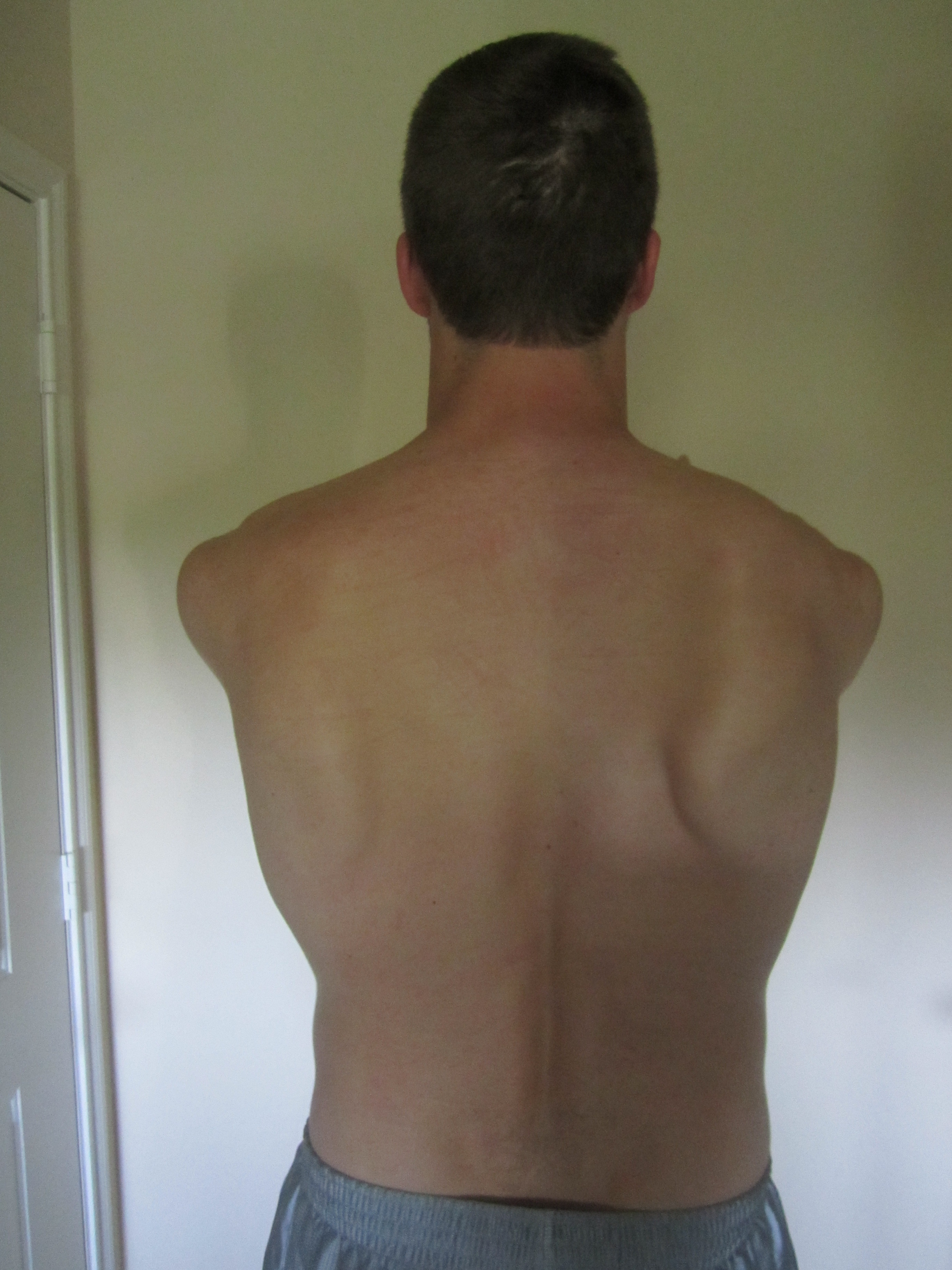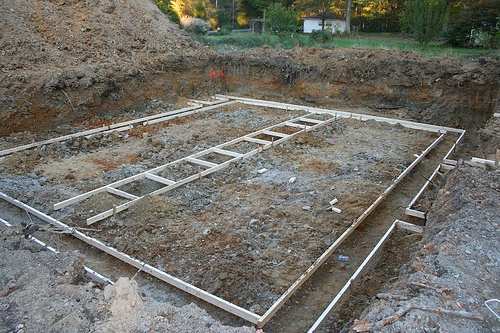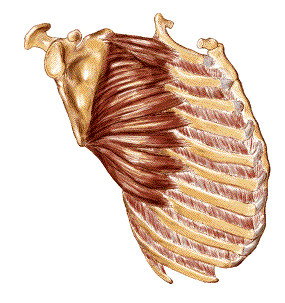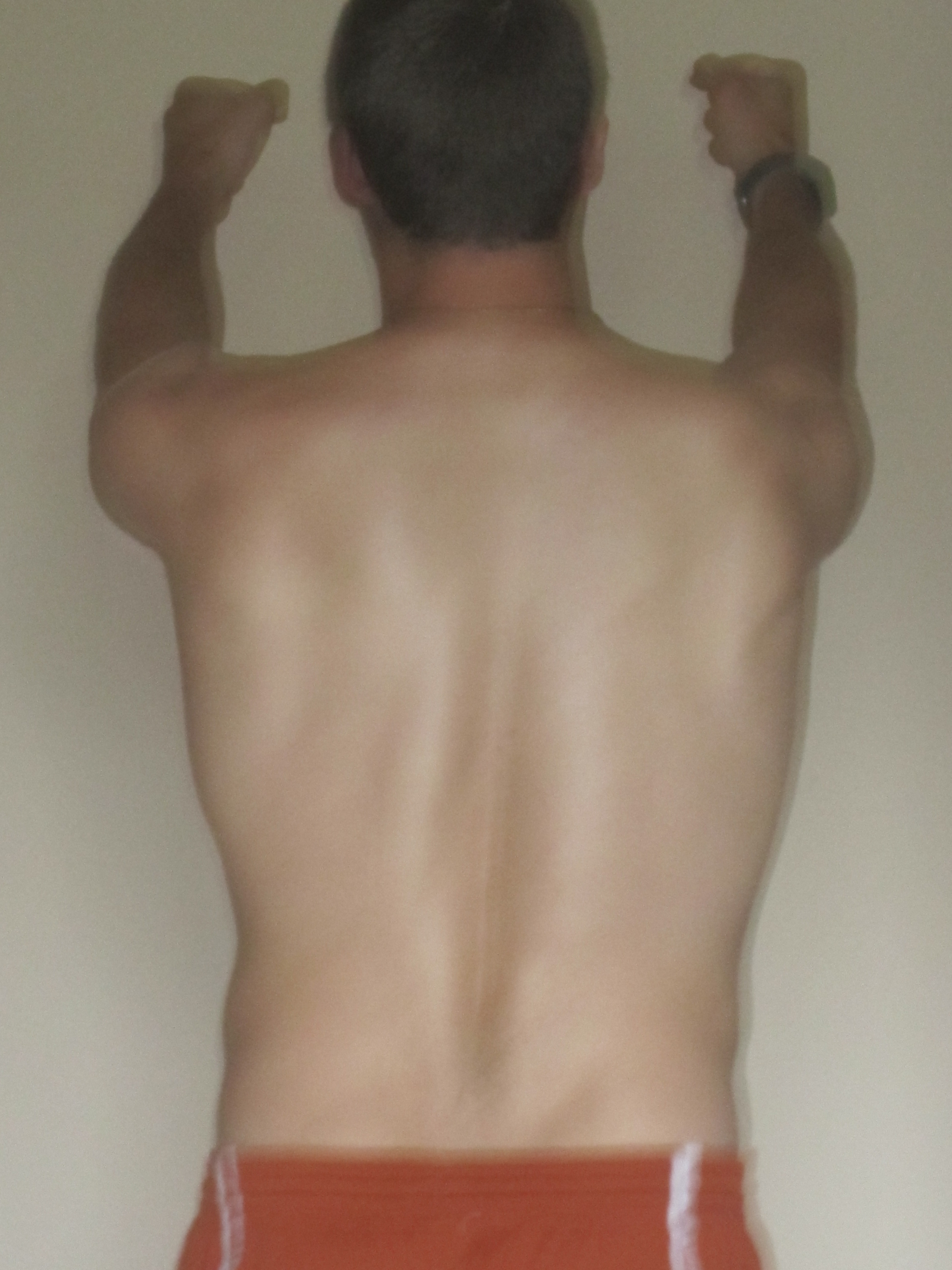Scapular Stability: Building an Upper Body Foundation
So after taking a poll last week to see who would be interested in me jabbering on about specific topics, the results came back saying 68% wanted scap stability. Being of the people, by the people and for the people, I figured I’d cave in and do a post or two on it.
Many reading this are probably personal trainers, strength coaches, fitness enthusiasts or maybe just the average Joe who wants to get their learn on and become wicked smart in all ways of getting your swole on. So I’m sure there’s a lot of people thinking “Gwarrrrgh!! I wanna find out how to get my biceps crush on!!!” Easy dude, let’s use a little analogy to see why this is important.
Say you’re trying to build a house, and you have a foundation made of mud and twigs and other less than stable stuff. The size of your building is going to be somewhat limited, as the foundation will shift and move, resulting in that whole thing coming crashing down. By having a strong foundation you can build a bigger and stronger building that won’t come down regardless of what you throw at it.
Your shoulders follow the same concept. If you have a shaky foundation (scapula), you’re chances of getting some sort of injury increases dramatically, but also decreases the amount of force you can apply to the shoulder in the form of resistance lifted and ability to generate force through the linked chain system.
So what’s so important about the scapula?? Well, it just kinda hangs there, supported by muscles. The major muscles that support the scapula and give it some sort of foundation are the trapezius (specifically the lower, middle and upper segments), the rhomboids, serratus posterior, serratus anterior, and also the long head of the biceps. Crazy, right?? Getting your guns blazing can actually help stabilize your shoulder!!!
Traps on the left, serratus anterior on the right, yo.
So here’s the million dollar question: When was the last time you heard anyone talk about your serratus as being an important power generating muscle?? Or trying to get your lower traps to fire properly? You probably heard about it, but decided to toss the idea into the crapper like stretching and joint mobilization. Without the lower traps firing, the scapula has a tendency to essentially tip and pull away from the ribs, a process known as “winging.” Without going into too much detail about how important this is, think about one of the common components of deadlifting, where you’re supposed to pull your shoulder blades into your back pockets to shorten the lever arm length from the shoulder to the lumbar spine’s axis of rotation. By doing this, you reduce the resistance arm on the low back and help to avoid damaging the low back. If the scapula wings, the lever arm length is increased artificially, which can predispose your low back to injury. As another example, without the scapula sitting tight to the ribs, the angle of the acromion changes and increases the risk of the rotator cuff to injury, which means winging is pretty darn important to recognize and fix before you try to get your strength up.
Now let me introduce you to a friend of mine named Mike Groth from Austin Texas. Mike writes a pretty cool blog called Attainable Growth, and I met up with him in Las Vegas recently at the NSCA Personal Trainers conference. Mike’s had a fun history of shoulder issues that resulted in a whole mess of shoulder stability issues. He was thinking that there might be some form of nerve entrapment or de-innervation issues that were reducing the ability of the muscles to actually nut up and do their jobs properly. Here’s a picture of Mike trying to rock the shirtless male supermodel look.
 In case you missed that, righty is hanging a little limp. So while I had just a brief chance to review his medical history (read: he told me about his surgeries and the issues he’s had, plus what he’s done for treatments), I checked his movement patterns out and found three basics that pretty much everyone with some form of winging will present with:
In case you missed that, righty is hanging a little limp. So while I had just a brief chance to review his medical history (read: he told me about his surgeries and the issues he’s had, plus what he’s done for treatments), I checked his movement patterns out and found three basics that pretty much everyone with some form of winging will present with:
Weak as hell lower traps
Limited scapular protraction range of motion, but not necessarily weak serratus muscles
Weak serratus posterior
There was a few other things that popped up, but these were the biggest trends that he showed. So I decided to test it out and put him through a little mini-circuit of exercises, which he so graciously filmed and supplied to me for this post. It works on low trap isolation from a hang position, pulldowns with a biofeedback mechanism of touching the muscle that’s trying to contract so he knows if he is doing it properly, and then a scap shrug from a plank position working on maximal protraction range of motion. Pretty awesome, I know.
Immediately after his first set, I re-tested him to see what effect the exercises had, and they resulted in a noticeable increase in stability and reduction in winging. I had him do these exercises daily for three weeks to retrain the atrophied muscles and get them to hold the scapula in the right position. Here’s the results in a dramatic before and after.
Here’s what Mike had to say about the whole ordeal:
My shoulder story is probably alot different than most people; I dealt with recurrent subluxations throughout high school and college when I played football and rugby, respectively, I always suffered from having winged scapula my whole life, and as a result, shoulder strength and stability has always been my main weak point. After having 2 surgeries on my right shoulder, one for a bankart lesion, and the other for a subscapularis tear/posterior capsule tightening, it left me feeling a lot more pain free, but still very limited in my mobility in certain ranges of motion. Therefore, I decided to embark on a soft tissue work journey in an attempt to regain full range of motion back in my shoulder. This started about 3 months ago, and since then, it had been feeling better, but for some odd reason, my shoulder winging got worse, and my weakness had also gotten worse. This is where Dean’s help came in. I met Dean at a personal trainer’s conference about 3 weeks ago, and he was kind enough to give me a very thorough assessment, and what he thought were the 3 best exercises to do to help out my condition. Low and behold, 3 weeks later, my winged scapula has been making drastic improvements! I no longer have nearly as much winging as I did before I met Dean, and things continue to get better. I highly recommend working with Dean because he has a sharp eye for minute details that most specialists would look over, or would see and then give what I would call a “blanket treatment” program that “might” help out.
Mike was so excited that he decided to go out and play some baseball and proceed to injure AC joint in a 3rd degree separation. WHAT A PARTY ANIMAL!!!
So this was essentially the first step in developing some sort of scapular stability in someone with a bad winging pattern. In tomorrow’s post, I’m going to show you step two’s workout program. Sound good?? Sure does.
If you wanted to learn more about fixing muscle imbalances from some of the best in the biz, check out Muscle Imbalances Revealed, with authors like myself, Mike Robertson and Bill Hartman to name a few, it’s a pretty big deal. Plus, for the money it’s probably one of the most comprehensive educational products out there. Check it out HERE.






20 Responses to Scapular Stability: Building an Upper Body Foundation